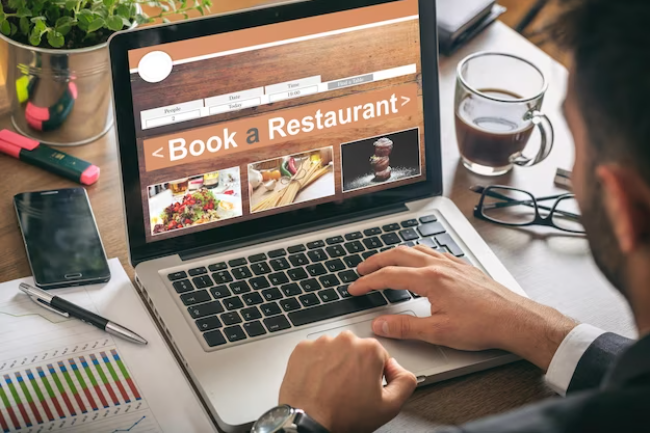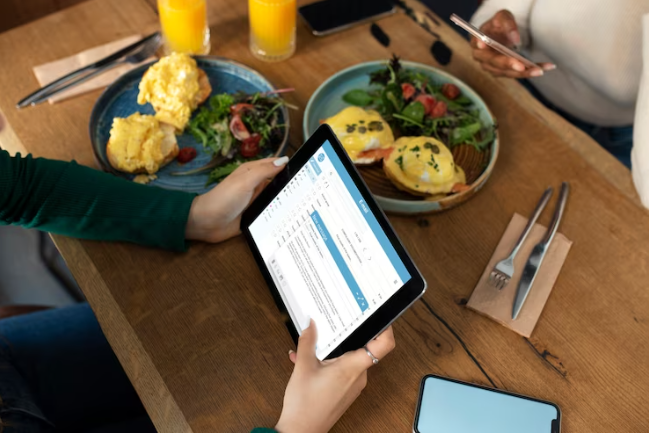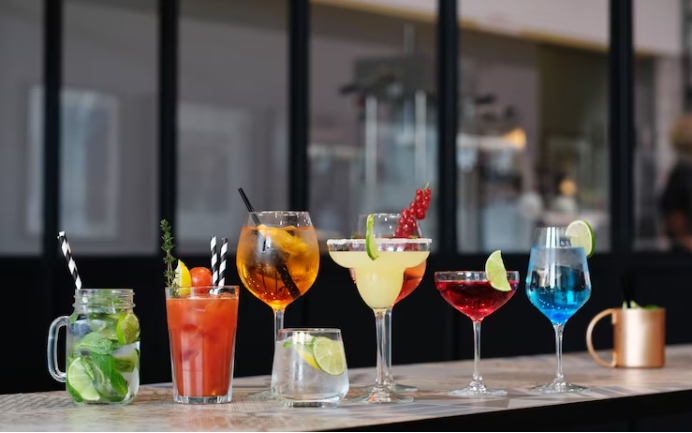Are you tired of managing restaurant reservations and seating manually? With the rise of online reservation systems, there’s no need for you to do everything the old-fashioned way.
Online reservations can help you streamline your restaurant management and provide a better experience for your customers. One of the benefits of online reservations is that it makes it easier for customers to book tables at your restaurant. They can do it from the comfort of their own home, without having to call in during busy hours. Additionally, online reservation systems can help you keep track of your available tables and manage your reservations more efficiently.
In this article, we’ll explore the benefits of online reservations, how to choose the right reservation system for your restaurant, managing reservation availability and waitlists, seating strategies for maximizing efficiency and comfort, and tracking and analyzing reservation data for business insights.

Benefits of Online Reservations for Restaurants
Online reservations provide a multitude of benefits for restaurants, ranging from increased efficiency and convenience for customers to improved data collection and analysis for the restaurant management team.
With online reservations, customers can easily book a table at their preferred time without needing to call the restaurant or wait in line. This not only improves the customer experience but also reduces the chances of no-shows, as customers are more likely to honor their reservations if they’ve made them online.
In addition to these benefits, online reservations also allow restaurants to collect valuable data about their customers, such as their dining preferences and habits. This data can then be used to improve the restaurant’s overall performance, from menu offerings to marketing strategies.
By leveraging this data, restaurants can better understand their customers and tailor their services accordingly, ultimately leading to increased customer satisfaction and loyalty.
Choosing the Right Reservation System for Your Restaurant
Picking the perfect booking system could mean the difference between a chaotic rush and a smoothly run dining experience. When choosing a reservation system for your restaurant, consider the customization options available.
Your booking system should allow you to tailor the reservation process to your specific needs, such as setting different seating capacities for different times of day or offering special menus for certain events. In addition to customization options, integration capabilities are crucial when selecting a reservation system.
You want a system that can seamlessly integrate with your existing restaurant management software, such as point-of-sale systems or inventory management tools. This will help you streamline your operations and avoid any potential hiccups that could negatively impact the customer experience.
Taking the time to research and choose the right reservation system for your restaurant can pay off in the long run, resulting in happier customers and a more efficient operation.
Managing Reservation Availability and Waitlists
To ensure a smooth dining experience for your guests, you’ll need to keep track of your reservation availability and waitlists. Waitlist management is crucial to avoid overcrowding your restaurant and upsetting customers.
You can use your reservation system to automatically add guests to your waitlist when your restaurant is fully booked. Make sure to keep guests updated on their wait time and availability status. It’s important to balance the wait time with the quality of the dining experience, so consider offering complimentary drinks or appetizers to guests who wait longer than expected.
In addition to managing waitlists, you’ll need to establish reservation cancellation policies. This will help avoid no-shows and ensure that tables are available for other guests. Consider implementing a policy that requires guests to cancel their reservation at least 24 hours in advance. You may also want to require a credit card deposit for larger parties or peak dining times.
Be sure to communicate your policies clearly on your website and in your confirmation emails to guests. By managing your reservation availability and waitlists effectively, you can create a positive dining experience for your guests and maximize your restaurant’s capacity.
Seating Strategies for Maximizing Efficiency and Comfort
Maximizing efficiency and comfort in your restaurant can be achieved through strategic seating arrangements. Table layout and customer preferences play a crucial role in creating a comfortable dining experience for your guests.
Consider the size and shape of your tables, as well as the distance between them, to ensure that customers have enough space to enjoy their meals without feeling cramped. Additionally, take into account customer preferences for seating, such as booths versus tables, and try to accommodate these requests whenever possible.
Seating arrangements also have a significant impact on server workflow. By strategically placing tables, you can create a more efficient flow for your servers, allowing them to move around the restaurant with ease and attend to customers quickly.
Consider grouping tables together in sections to make it easier for servers to manage their tables and minimize the amount of time they spend walking back and forth across the restaurant. By taking the time to carefully plan your seating arrangements, you can create a more comfortable and efficient dining experience for both your customers and your staff.
Tracking and Analyzing Reservation Data for Business Insights
By analyzing reservation data, you can gain valuable insights into your customers’ dining habits and preferences. This allows you to make informed decisions about your menu and marketing strategies.
Reservation trends can provide valuable information about when your restaurant is busiest and what types of customers are visiting most frequently. You can use this data to adjust your staffing levels and menu offerings to better meet the needs of your customers.
Customer behavior analysis can also help you identify areas where you can improve the dining experience. By tracking which menu items are most popular and which ones are frequently returned, you can make changes to your menu that will appeal to your customers and reduce waste.
Additionally, analyzing customer feedback and complaints can help you identify areas where you can improve your service and train your staff to provide a better experience. By using reservation data to gain insights into your customers, you can make data-driven decisions that will help you improve your business and provide a better dining experience for your customers.
Do you want a more personalized dining experience? Look no further than tableside technology.
Frequently Asked Questions
Are there any legal regulations that restaurants need to follow when accepting online reservations?
As a restaurant, you have legal obligations to protect customer data privacy when accepting online reservations. Ensure that you follow all applicable laws and regulations to avoid any legal issues.
How can restaurants ensure that online reservations are accurate and not overbooked?
To ensure accurate reservation management and prevent overbooking, use a reliable reservation system with real-time updates. Set and enforce clear policies on cancellation and no-show fees. Train staff to monitor and adjust seating availability accordingly.
Do online reservations have any impact on walk-in customers and their wait times?
Online reservations can impact walk-in customers by affecting their wait times. This could lead to lower customer satisfaction and revenue if walk-ins are turned away due to overbooking.
Can restaurants customize their reservation system to fit their specific needs and preferences?
Yes, restaurants can customize their reservation system to fit their specific needs and preferences. Customization options include setting table sizes, blocking off certain times, and managing reservations through a user-friendly interface. Reservation management has never been easier.
How can restaurants handle no-shows and late cancellations for online reservations?
To handle no-shows and late cancellations, you can implement customer communication protocols that encourage timely cancellations. Another option is to require reservation deposits, which can be refunded if the customer shows up.
Conclusion
Congratulations! You now know the benefits of online reservations for your restaurant, how to choose the right reservation system, and how to manage reservation availability and waitlists.
You’ve also learned about seating strategies for maximizing efficiency and comfort, as well as how to track and analyze reservation data for business insights.
Implementing these strategies will not only make your restaurant more organized and efficient, but it will also enhance the overall dining experience for your guests. By utilizing online reservations and effective seating strategies, you can ensure that your restaurant runs smoothly and your customers leave satisfied.
So what are you waiting for? Start implementing these tips today and watch your restaurant thrive!



